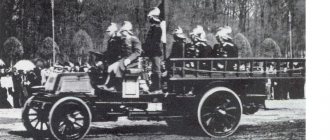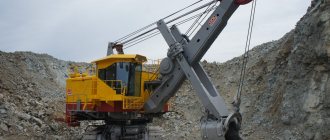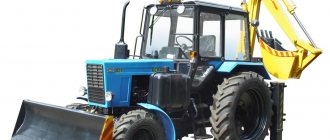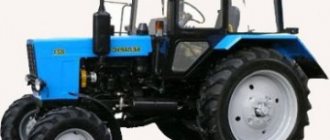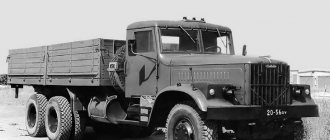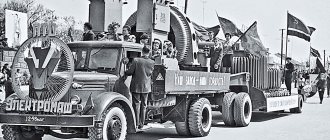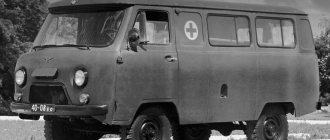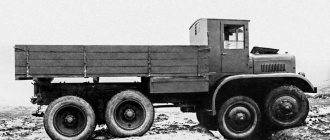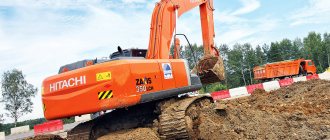Today, looking at the power of modern earthmoving and mining equipment, it is difficult to imagine that just a couple of hundred years ago even the simplest excavator seemed unattainable fantasy.
Until the thirties of the nineteenth century, any excavation work was carried out exclusively by hand using shovels and spades, and one could not even dream of mechanizing labor.
Over the course of two hundred years, excavators have gone from low-power, primitive and low-functional steam engines to steel colossuses that can do any job. In modern conditions, excavators no longer seem like a miracle of technology. Today, even a private owner can use the services of a backhoe loader by renting it for the necessary time.
Our company offers rental of excavators in Khimki, Klin, Istra and other localities in the Moscow region. Thanks to our flexible conditions, you can profitably rent special equipment either for just a few hours or for a longer time (for example, for the entire winter period for snow removal).
The very first
The very first excavator appeared in 1836 in the United States of America. Its creator, a certain G. Otis, spent 4 years designing a new machine for the whole world.
The main reason that prompted Otis to create excavator equipment was the active construction of railroads in the United States.
The work was carried out manually, and there was a catastrophic shortage of workers, and one Otis machine replaced approximately 50 people in terms of productivity. Excavator services have become cost-effective for developers.
The first excavator had a semi-rotary platform and a railway chassis. The executive body was a front bucket with a volume of 1.14 cubic meters, driven by a steam engine with a power of 15 horsepower. The hourly productivity of the first excavator was 45-50 cubic meters.
The first experience was more than successful, and Otis continued to improve the design of the excavator. Within a few years, one Otis machine could replace 180 workers!
The first excavators in imperial Russia and the pre-war USSR (16 photos)
Author: Ivan
April 22, 2022 11:53
Tags: USSR history Russian Empire facts
3830
16
If you ask the question: “without what would the great construction projects of the first five-year plans have been impossible?”, then some will probably say “without the Gulag”, others - “without the revolutionary enthusiasm of the working masses”, others - “without the iron will of the party leadership”, but in fact In fact, they would have been physically impossible (at least in a comparable time frame) without steam excavators, which made it possible to speed up the pace of excavation work tens of times. Without them, these construction projects would drag on for decades.
0
See all photos in the gallery
Without them, these construction projects would drag on for decades, and it is far from certain that there would be enough labor for them. The history of steam shovels began in 1882, in the town of Bucyrus, Ohio, where a rail-mounted steam shovel called Thompson's Iron Steam Shovel was put into mass production at the local Bucyrus Foundry & Manufacturing Company plant. This unit became the prototype for the first and only Russian pre-revolutionary steam excavator “Putilovets”, production of which began in 1903 at the Putilov Machine-Building Plant. Unlike modern excavators that operate on hydraulics, the Bucyrus had all its working mechanisms driven by chain winches. The bucket volume was 1.4 cubic yards, and the excavator crew consisted of four people: a driver, also known as the “crew commander,” a fireman, an oiler, and a bucket operator. In addition, each excavator was assigned a team of seven people who manually laid the rails in front of it. The weight of the vehicle was 75 tons. A little later, a more powerful 85-ton modification with a two-cubic-yard bucket appeared. At the time of its creation, the Thompson excavator was considered the most productive in the world. In one day he could remove and move up to 4,000 cubic meters of soil into trolleys. For comparison, the daily production rate per digger was, depending on the complexity of the soil, from 2.5 to 4 cubic meters. Thus, one steam shovel replaced up to a thousand ordinary ones. At the same time, it was relatively simple to produce and could be produced at any locomotive plant. It is not surprising that when the need for excavators arose in Russia due to the large scale of railway construction, the machine was taken as a model, although by 1903 it was no longer considered new. From 1903 to 1917, 37 “Putilovtsev” were built in St. Petersburg, which worked throughout the country, from Eastern Siberia to the Kola Peninsula. In 1929, the industrialization program required the resumption of excavator production. They decided not to bother with the development of a new machine, but simply shook off the dust from the Putilovets drawings and transferred them to the Kovrov Mechanical Plant, which was to become the flagship of the Soviet excavator industry. There, the development of the production of earthmoving machines at first went neither shaky nor slow. The first prototype was made only in the spring of 1931, the second was assembled a few months later. Of course, the bosses were not pleased with this pace of work, and they decided to sharply speed up the work, transferring the plant to the jurisdiction of the OGPU. I don’t know (although I can guess) what methods the security officers used, but under their strict leadership the enterprise immediately started working at machine-gun speed, producing as many as 177 excavators in 1932-34. That is, in three years they made almost five times more than the pre-revolutionary Putilov plant produced in 14 years! Due to a change in the place of production, the name of the machine was changed from “Putilovets” to “Kovrovets”. “Kovrovtsy” were used at many construction sites, but most of them were sent to the construction of the Moscow-Volga canal, where the appearance of these powerful units made it possible to sharply intensify land work. For example, at the so-called Deep Excavation in the Khimki region, tens of thousands of diggers removed two million cubic meters of soil in the first two years, and over the next two years, 32 excavators extracted eight million cubic meters from the bed of the future canal, digging a giant trench 24 meters deep and 140 meters wide. meters and a length of six kilometers. We can say with confidence that without “steam shovels” this and many other construction projects would not have been completed before the war. The most amazing thing is that some copies of the Kovrovtsy worked until the end of the 1980s. Unfortunately, none of them have survived to this day; in the “troubled times” of the 90s, all these epoch-making machines were dismantled for scrap. ___________________________________________________________________
×
0
Thompson's car was mounted on a long four-axle railway platform and resembled a boxcar. A horizontal locomotive-type boiler powered three single-cylinder steam engines with a total power of 150 hp. One ensured the movement of the excavator, the other ensured the horizontal rotation of the boom, and the third provided the movement of the bucket. The boiler ran on wood or coal. The cabin was lit by kerosene lamps.
0
___________________________________________________________________ Drawing of a Thompson excavator produced by .
0
_______________________________________________________________ Thompson's "Steam Shovel" on the Panama Canal. 119 excavators were involved in the construction of this large-scale hydraulic structure, of which 77 were.
0
+++++++++++++++++++++++++++++++++++++++++++++++++++ ++++++++++++ Another excavator of the same brand. Thanks to the removed side, the cylinder of the steam engine that powered the boom turning mechanism is clearly visible.
0
+++++++++++++++++++++++++++++++++++++++++++++++++++ ++++++++++++ Thompson excavator at a sand pit somewhere in the USA. The name of the manufacturer is written on the board.
0
+++++++++++++++++++++++++++++++++++++++++++++++++++ ++++++++++++ “Putilovets” is a Russian copy of “Bucyrus”. Sand quarry near the village. Shapki (now Leningrad region), where the line from Tosno was laid in 1912. Excavation is carried out using a steam excavator from the Putilov plant.
0
+++++++++++++++++++++++++++++++++++++++++++++++++++ ++++++++ "Putilovets" at the construction of the Siberian (Amur) railway in 1912 or 1913. Pay attention to the man with an ax on the back platform, chopping wood for the firebox.
0
+++++++++++++++++++++++++++++++++++++++++++++++++++ +++++++++++ Part-rotary steam excavator on a railway track with a bucket with a capacity of 2.5 cubic meters “Kovrovets”. Photo from the book by N.G. Dombrovsky "Excavators".
0
+++++++++++++++++++++++++++++++++++++++++++++++++++ +++++++++++ At first, excavation work on the Moscow-Volga canal was carried out like this. Productivity was somewhere on the level of Ancient Egypt.
0
+++++++++++++++++++++++++++++++++++++++++++++++++++ ++++++++++++ Then “Kovrovtsy” appeared and things became more fun.
0
+++++++++++++++++++++++++++++++++++++++++++++++++++ ++++++++++++ Development of excavation using the Kovrovets excavator with loading of soil onto railway platforms (Moscow-Volga canal). Photo from the magazine “Mechanization of Construction”.
0
+++++++++++++++++++++++++++++++++++++++++++++++++++ +++++++++++ Note the abbreviation NKVD on the side of the cabin. The photo was taken in 1934 in the Deep Recess area.
0
+++++++++++++++++++++++++++++++++++++++++++++++++++ +++++++++++++ Assembly of the Kovrovets excavator sent for the construction of the Saratov Agricultural Machinery Plant.
0
+++++++++++++++++++++++++++++++++++++++++++++++++++ ++++++++++++++ Steam semi-universal full-rotary crawler excavator МIIIП-1.5 (or М-III-п) with a bucket capacity of 1.5 cubic meters is the first Soviet crawler excavator, mass-produced since 1932 Votkinsk Machine-Building Plant according to the drawings of VTKE (All-Union Design and Technical Office of Excavator Manufacturing or “Proektekskavator”, created in 1930 by a resolution of the Council of Labor and Defense of the USSR).
0
+++++++++++++++++++++++++++++++++++++++++++++++++++ +++++++++ The world's largest steam-powered excavator was built by the Marion Power Shovel Company. The machine was built in 1906 for the General Crushed Stone Company, which originally used an excavator to quarry stone. At first, the excavator was placed on rails closed in a circle, and the wheels were like those of trains, only much larger considering that the weight of the machine was 105 tons. After some time, the manufacturer released a special kit for converting an excavator to a crawler track, which was done in 1923. In New York State, almost at its northernmost border, there is a town called Le Roy. The fact is that literally 3 kilometers from Le Roy, in a fenced area, stands one of the old wonders of mechanical engineering. At the moment the car is heavily rusted. The original boiler is still there, and judging by its condition and eyewitness accounts, it can still be restored. The mechanisms that made it possible to move the bucket were so rusty that they could no longer be touched—they would fall apart.
Author's post
More cool stories!
- Seven interesting facts about everything in the world
- Suddenly: when the house is suddenly no longer a fortress
- 20 people whose day was clearly not going well today
- 20+ stories from doctors that show that many know nothing about their body
- Two pregnancies, but only one birth: how can this be?
Tags: USSR history Russian Empire facts
ANTI-FISH All about politics in the world
Do you like to remember how things were before? Join us, let's feel nostalgic together:
96 0 96
Liked
96 0
7
Partner news
First deliveries abroad
All the first machines were used in the construction of railroads in the States. For the first time, excavators “left” their homeland in 1842 - one Otis machine was sold to England, and already in 1843, as many as four excavators were sold to Russia, despite the fact that at that time Otis had created only seven of them!
All four American excavators were involved in the construction of the Nikolaev railway track. But for some reason, American equipment did not gain popularity among construction contractors, and in 1848 all four machines were resold to the Urals, where they were successfully used for other purposes - during stripping operations in ore mining quarries.
They'll fight again
Another fact is noteworthy. In modern quarries and open-pit mines, Uralmash or NKMZ machines actually still operate today - in general, Igor Stefanovich explained why. But what is surprising is that the same machines that the enterprises bought from these factories during the Soviet era are still in use. So, the mentioned dragline crossing the road in the Urals is an NKMZ machine.
Their own equipment is used at the Uralasbest quarry. The cars are already 40-50 years old. And the record for the operating life of Uralmashzavod draglines belongs to the Estonian company Enefit Kaevandused AS: its fleet of operating excavators includes an ESh 15.90, which has been operating at the enterprise since August 1966.
“Yes, the machines are not young,” say the engineers of the Krasnobrodsky open-pit mine of Kuzbassrazrezugol, nodding at their “shagars” originally from Kramatorsk. But at the same time they insist: excavators are still serviceable. The safety margin is huge, all elements can be repaired. Plus, the same relative immobility of the machines with which we started is also beneficial here - less wear and tear.
The long life of the cars is also explained here by the fact that Soviet production, in principle, lived according to slightly different laws than modern ones: they did not put, so to speak, a “date of death” into the car, because there was no task to send the buyer for a new one. Therefore, the resource was assumed to be double and triple.
Other owners of such cars speak about the “oldies” in much the same way. Uralasbest carried out a scheduled repair of one of its four excavators last year. We restored the required diameter and shape of the excavator cup and replaced the bushing. Along the way, the boom and turntable were repaired and the electrical equipment was inspected. And that's it, back into battle.
“This is again a legacy of the USSR. No one counted the money, and these machines were produced with a deliberately large safety factor, based on at least 20 years of continuous operation of excavators. And since, due to the nature of their operation, they do not work constantly, with sometimes quite long breaks, their “life” period significantly exceeds the calculated service life. In addition, NKMZ machines are easy to maintain and easy to repair, which additionally makes it possible to extend their active life,” agrees and adds Igor Protynyak.
Evgeny Spitsyn says that even today, when creating draglines, the plant aims them at a long service life. Even longer than before: no longer 22.5 years, but 25 years. Because the technology is not simple, expensive - in Ural. So, even after a 20-year service life, cars are often not written off, but modernized. For example, the Indian NCL did exactly this with five of its draglines purchased from UZTM: with the participation of specialists from the manufacturing plant, they were updated, and before that they worked for an average of 30 years.
But still. Yes, the “old men” are still going into battle, but they are clearly not alone. Production volumes are growing, machine plants are working, technology is being improved - new draglines are appearing, already of the 21st century.
Crucial moment
Until the mid-twentieth century, the confrontation between “steel diggers” and manual labor persisted. The services of single-produced excavators were expensive, but by the standards of that time the machines were quite productive.
On the other hand, the mechanization of labor threatened total unemployment. In addition, the breakdown of an excavator led to many days of downtime and missed deadlines, while with manual labor such a disadvantage was eliminated.
But from the mid-nineteenth century, the construction of railways and canals increased significantly in scale, and manual labor slowly but surely began to lose ground to steel colossi.
Starting from the mid-twentieth century, various modifications of excavators began to appear, focused on certain operating conditions and adapted for specific types of work. In particular, so-called construction locomobiles appeared in Germany, which are essentially an excavator with a single-rope grab.
However, progress came to Russia a little later. On Russian soil, manual labor was actively used until the end of the twentieth century. “American excavation machines” were used only during the construction of the Trans-Siberian Railway, and only in its individual sections.
Who was the first?
Although with the origins everything is not so simple. Let's start with the most common version: the first Soviet dragline was a graduate of Uralmashplant.
“In 1948, one of the great Soviet construction projects began - the construction of the Volga-Don canal. It required more powerful earth-moving machines to move hundreds of millions of tons of soil. It was then that the question arose about creating draglines - walking excavators. At first, they considered the issue of entrusting the design and production of such machines to the Novokramotorsk Machine-Building Plant, but the Uralmash workers insisted that the project be given to them.
In total, the Ministry of Heavy Machinery of the USSR allocated 8 months for the entire production (from development to manufacturing) of the first dragline, although the actual period required to create an excavator was 3 years. Dragline ESH 14.65 (14 is the volume of the bucket in “cubes”, and 65 m is the length of the boom) was ready right on time. He worked for 30 years,” said the press service of Uralmashzavod.
The same story was told to us by Sergei Ageev, a researcher at the Uralmashzavod museum, the custodian of its history and the author of a whole series of specialized articles, when we were visiting him. The same version is defended by Lev Sonin in his book “For Heavy Engineering”. Moreover, he provides quotes and details of these developments: the disputes, the difficulties, and the modifications and rework that the developers went through during these eight months.
At the same time, on the website of Novokramatorsky Mashinostroitelny. That is, we are moving back a year from the Uralmash history. Was this the same project that the Ekaterinburg residents subsequently completed?
But that's not all. On the official website of the Kopeisk Machine-Building Plant you can find information that in 1948, “the first walking excavator ESH-1 in the Soviet Union was assembled at the plant.”
Probably, 70 years later, it doesn’t matter who pioneered here. The Kopeysk machine plant went into production of slightly different mining equipment, but the Kramatorsk and Yekaterinburg plants continued their work - and are still “walking” to this day.
Today these manufacturers are the leaders of this market in the CIS countries. According to rough estimates, in total they occupy about 80%.
“This is how it happened historically. Since the times of the USSR, there have been only two factories producing medium and large walking draglines: NKMZ and UZTM, respectively. And the former USSR market was saturated with these draglines in excess quantities.
Over decades of operation of these draglines, enterprises have accumulated vast experience, there are repair bases for these machines with a large repair fund, dozens of generations of operating and maintenance personnel have grown up on this equipment and know it very well, and it has proven itself well.
Therefore, the post-Soviet customer does not want to conduct experiments in their quarry fields, but wants to receive a proven machine that is easy to use and maintain, and is guaranteed to fulfill the assigned tasks,” Igor Protynyak comments on the situation.
The first Russian excavator
The first Russian excavator was produced by the Putilov plant in 1902 and was also semi-rotary and single-bucket, but at the same time it provided for the possibility of replacing the bucket with a 2.3 cubic meter one. for light loads or 1.5 cubic meters. for heavy ones.
Such a machine weighed from 65 to 75 tons (the variation in weight is explained by a single production and the lack of any standardization and unification), and the hourly productivity ranged from 100 to 290 cubic meters. Over the next 15 years, 35 excavators were produced, which became quite popular in Russia during construction work.
The production of earthmoving machines of this type continued until the 30s of the 20th century.
Cable excavator
First, mankind invented the cable excavator.
Its operating principle was similar to the operation of a crane and consisted of moving a trolley and bucket along load-bearing ropes. The very creation of cable excavators was the result of the combined efforts of many enterprises over several decades.
Some of these companies, such as Gradall or Caterpillar, have become well-known brands whose very name is associated with the concept of an excavator. Others have long since disappeared, destroyed by economic turmoil or absorbed by more successful competitors. Today, with the exception of some examples of mountain draglines, cable excavators have practically died out, giving way to hydraulic excavators.
However, of course, the history of the creation of an excavator began back in the 18th century with the invention of the steam engine.
Technical breakthrough
After the end of the First World War, the general development of science and technology spurred the production of excavators. Machines with electric drives and internal combustion engines, pneumatic and caterpillar drives, and walking machines appeared; rope traction was gradually replaced by hydraulic drives.
Excavator platforms became fully rotatable, the range of their working parts expanded, and, consequently, the scope of application - excavators became not just earth-moving machines, but began to be actively used in the construction of buildings and architectural structures (including tunnels), for stripping and mining operations in the mining industry , for cleaning urban areas, etc.
In the fifties of the 20th century, real giants with a 30-cc bucket appeared in the range of earth-moving equipment.
Excavator hydraulic system
Progress never stood still; new technical inventions constantly improved and changed the appearance of the excavator. Thus, with the invention of caterpillar tracks, it became possible to operate equipment in almost any conditions. Gradually, mechanisms with electric and diesel engines began to appear. Construction machines have become fully rotatable and more mobile.
But the most significant breakthrough in the design of the excavator occurred with the introduction of a hydraulic control system. The championship belongs to the English. The founder of this company, George Armstrong, was an engineer and one of the richest men in Europe. His hydraulic mechanism for the Tower Bridge created a real sensation in the world. Armstrong's hydraulic system was successfully used in naval equipment and bridges, but an attempt to introduce it into construction mechanisms was not successful: the machines turned out to be inactive and cumbersome. But it is with the name of Armstrong that the appearance of the first hydraulic excavator is associated.
The Second World War radically changed views on construction equipment and its design: maximum mobility was required in order to quickly restore destroyed plants, factories and houses. Therefore, the idea arose to mount excavators on a vehicle base to ensure rapid movement from one construction site to another.
In the post-war years, the first wheeled prototype of an excavator equipped with a hydraulic control system was born. The Bruneri brothers' Yumbo S25 was the first hydraulic construction machine to be mounted on a truck wheelbase.
After some time, the German company managed to establish industrial production of excavators equipped with a hydraulic drive, and soon the first full-rotary model of such a machine powered by hydraulics appeared.
Excavator technology today
The range of modern excavators is designed to carry out a wide range of diverse work.
Today there are miniature backhoe loaders, which are indispensable assistants for working in densely built environments, and real giants used for stripping and mining work in the mining industry.
We offer rental of excavators in Khimki, Klin, Istra and other localities in the Moscow region.
Our equipment is designed to work in urban environments and is the optimal choice for private and small-scale construction, cleaning of urban areas and similar work, which both private owners and small and medium-sized companies often encounter.
Monument in the steppe
Excavators, even such famous ones as Satovsky’s creations, always have an unenviable fate - they are born at the face and die there, since moving such a walking house is difficult, expensive and time-consuming. As a result, the giants are either dismantled for parts or left on the ground, as happened with the ES 65/100. The majestic machine, the height of a 9-story building, the bucket of which could easily fit 4 cars, is still in working order, but in the current conditions, when improved excavators are widely used, much smaller in size and do not require special parts, use the good old ES 65/100 is simply unprofitable. However, despite the simplification and reduction in cost of modern technology, the walking giants created at Uralmash are still considered the standard of quality, and the best confirmation of this is the iron giant, a monument to the miracle of engineering, which still stands in the Tulun open-pit mine and is slowly destroyed by time. In the 5 thousand tons of this excavator, which can be seen almost a kilometer away, enormous power still lies dormant, and perhaps someday they will remember the mothballed production site of the coal mine here and resurrect history by restarting the engine of the majestic machine.
Excavator EO-4321 technical characteristics and description
The pneumatic wheeled excavator EO-4321 was first produced by the Kyiv Machine-Building Plant in 1972. At that time, this model had all the necessary qualities that allowed the machine to perform any type of work in almost all available areas. This excavator is a representative of the fourth group of special equipment.
Description and features
This model differed from previous models in that the EO-4321 was the first to use a pneumatic wheel platform and a hydraulic boom, because previously all excavator equipment used a tracked platform. Thanks to this, the efficiency of the equipment has increased, since the excavator can move around the working area much faster than tracked models, which has reduced the time required for movement. In addition, the positive qualities that have made the technology very popular throughout the entire union are efficiency and versatility.
It is worth noting that EO-4321, during its serial production, was enlisted in the engineering troops and, accordingly, it took part in all construction sites.
Other important positive qualities are:
- The standard digging bucket has a fairly large capacity;
- The excavator has its own hydraulically driven supporting parts, which provides the equipment with high stability when performing any excavation work.
- The mechanical drive used on previous models was replaced by a hydraulic one, which in turn had a positive effect on the performance of the machine.
- The excavator was equipped with a front blade, which, in addition to leveling and filling trenches, can serve to provide additional stability when carrying out various excavation work.
- There is full access to all the elements of the power plant and hydraulic system that are necessary and required for regular inspection, thereby reducing the cost of operating personnel and reducing the time required to troubleshoot problems.
It is also worth noting another advantage of this excavator, namely its versatility. EO-4321 is adapted to work with 21 types of additional attachments, which allows it to perform a fairly large number of different jobs.
The standard excavator uses a backhoe with a capacity of 650 cubic millimeters. To develop soil above the excavator parking level, a straight shovel is installed. To dig large pits or wells, grab equipment is installed on the handle of the equipment. To perform loading operations of bulk and lump materials, a backhoe or a straight shovel is used, when a special crane boom is used for loading piece goods.
There is a rotating platform on the pneumatic wheel chassis. It houses the power plant, the operator’s cabin, reservoirs for hydraulic fluid and fuel, counterweights, the hydraulic system mechanism, as well as the control system for all equipment.
The chassis of the EO-4321 excavator includes a durable bent frame and pneumatic wheels. Special hydraulic mounts and a front dozer blade are mounted to the frame. The equipment is controlled when moving by turning the wheels of the front axle. The front axle is mounted on hinges. The front track width is five millimeters less than the rear one. The bridge itself is the leading one.
The hydraulic system located on the rotary platform of the excavator has a tank designed for 320 liters, a double axial piston pump, distribution and safety valve equipment and a hydraulic rotation drive. The working pressure in all hydraulics, regardless of the type of work performed, is kept at around 320 megapascals.
EO-4321 has a non-mechanical transmission, the main gear of which has bevel planetary gearboxes. The wheel drive is driven by a hydraulic motor, which makes it possible to more accurately adjust the speed of movement and traction force.
The highest speed of independent movement that the EO-4321 is capable of developing on a flat and straight section is 19.5 kilometers per hour, which is quite an excellent indicator for its age. The smallest turning radius is 7300 millimeters. There is a pneumatic drive on board the machine, which is responsible for the operation of the braking system and pressurization.
The wheeled chassis uses wide-profile tires, 530 mm at the front and 533 mm at the rear.
This machine is very versatile and convenient, both in terms of operation and maintenance. Thanks to these key advantages, EO-4321 became widespread throughout the Soviet Union.
But, like any other special equipment, this one also has its drawbacks, which include the weak frame design at the base of the turntable and the hoses of the hydraulic system, which often leak. The second problem was solved quite quickly and simply, namely, all the hoses were replaced with new ones, but eliminating problems with the frame caused some difficulties.
To increase strength, a rail or an additional beam was welded to the main profile. Closer to the beginning of the 1980s, the pneumatic wheel platform of the excavator was replaced with a tracked one. This was done to make the equipment more suitable for working in fields and quarries.

